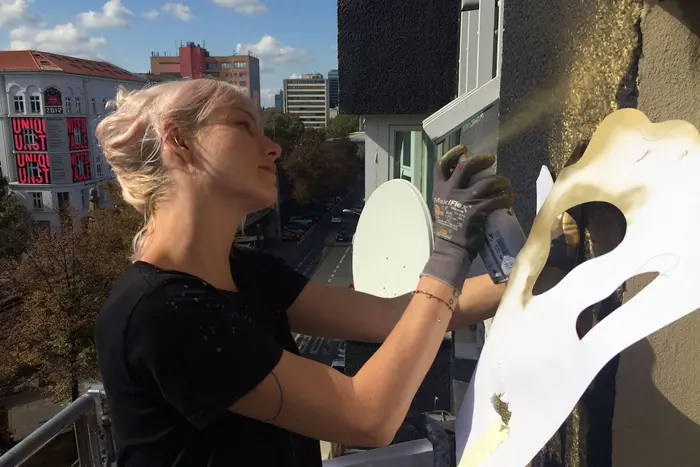The delicate pattern of lace, with its open web-like design, presents sophistication and symmetry. This is why lace fabric is often used as a decorative piece on garments, curtains, table cloths, and other furnishings. But Polish street artist NeSpoon discovered a new medium where she could apply traditional lace design. By spray painting the intricate lace patterns on walls, she creates fancy murals that can add a touch of finesse to the urban setting. Since 2009, NeSpoon has been transforming urban buildings and walls into elegant lacework murals that look so stunning and delicate.
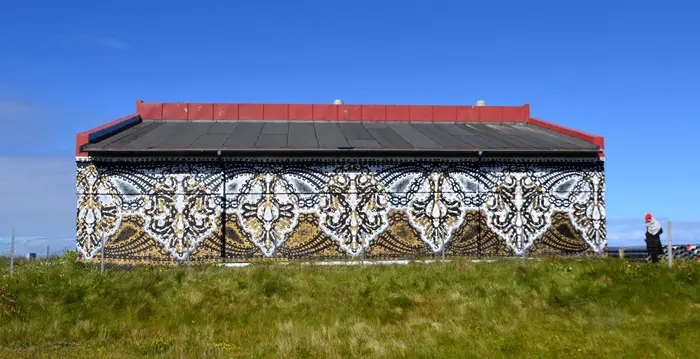
She has traveled across Europe to spread her artistic lacework murals. Most of her works featured prints of traditional laces, either by molding clay or painting on the walls. Street art has given creative artists the freedom to exhibit their artistic prowess and express their opinion. While most graffiti artists are using optical illusions or breathtaking landscapes as their subject, NeSpoon, on the other hand, picks laces as her inspiration.
“Because in laces, there is an aesthetic code which is deeply embedded in every culture.”, she wrote on her website. “In every lace we find symmetry, some kind of order and harmony. Isn’t that what we all seek for instinctively?”
Indeed, she brilliantly incorporates the history and culture of the place into her lacework murals. For example, her vintage lace patterns on an urban building in Berlin reminded us of the Art Nouveau style back in the early 20th century. By applying vivid gold paint against a black background, the decorative curved lines and forms seemed to mimic the flowery structures inherent to the art movement that took over Europe between 1890 and 1910.
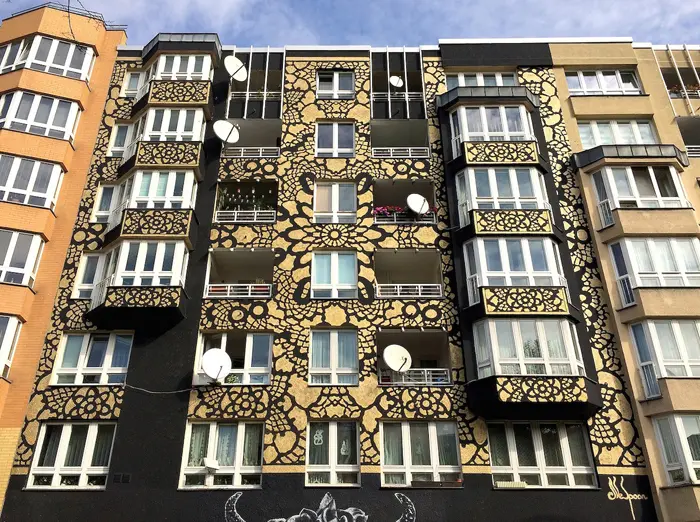
NeSpoon painted vintage lace patterns on this urban building in Berlin, Germany
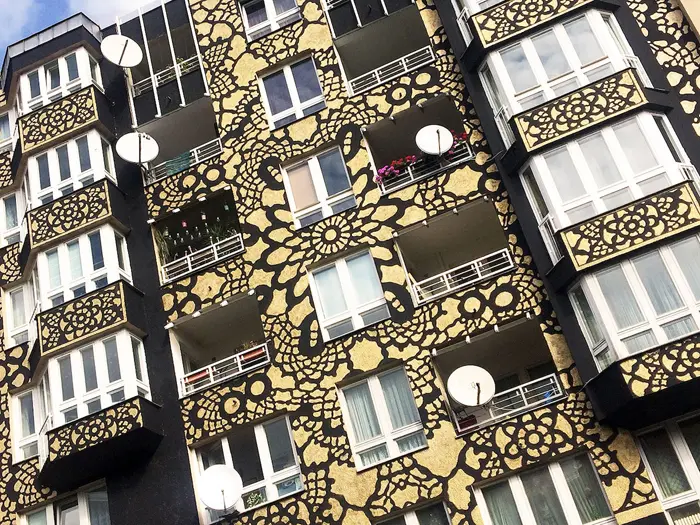
Her lacework murals in Lofoten demonstrated classical lace patterns sprayed on the sides of wooden buildings. The lace designs were based from a traditional lace pattern book in order to convey the historical background of Norway. Through intensive research, NeSpoon found out that Norway and Venice have a close-knit trade relationship in the 15th century. And lace fabric was one of the most in-demand trade items between the two countries.
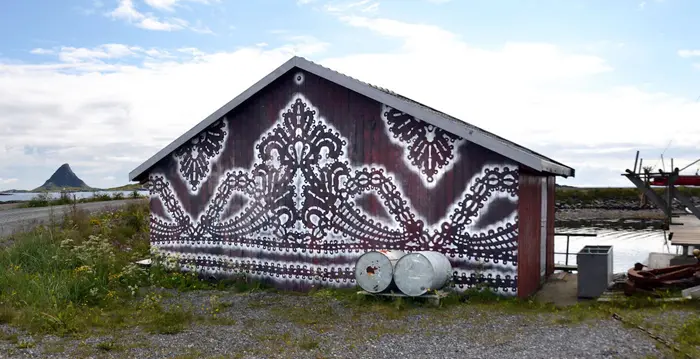
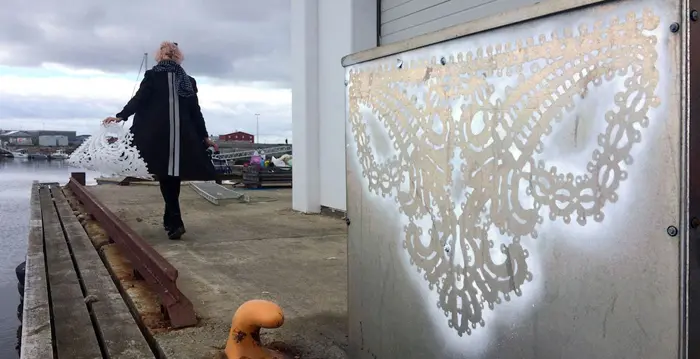
Take a look at her amazing lacework murals that she created across Europe.
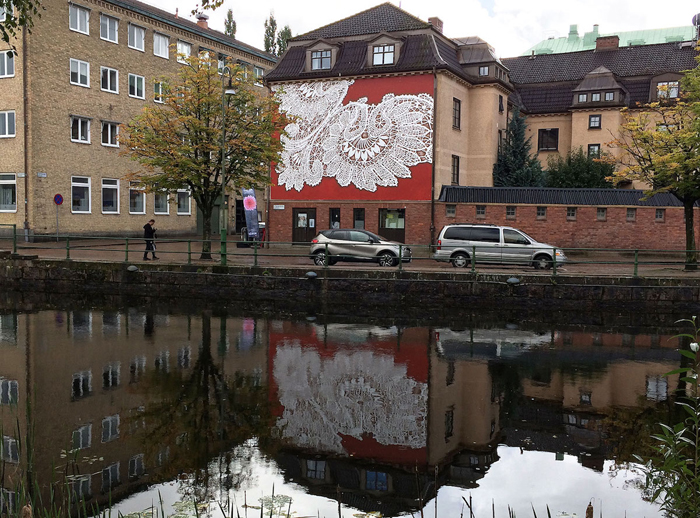
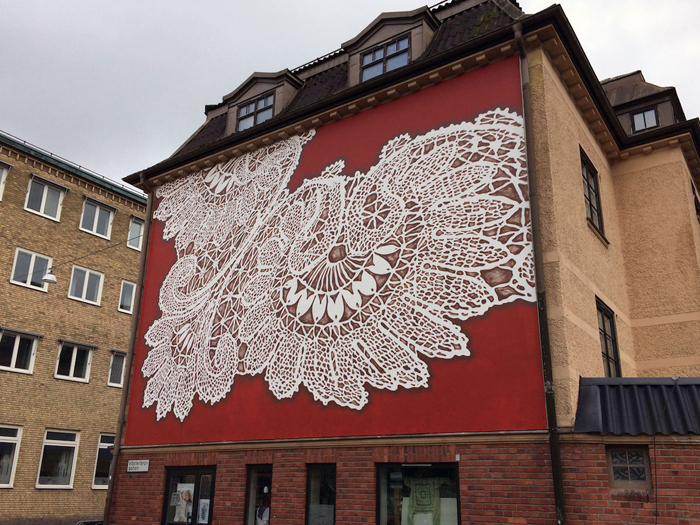
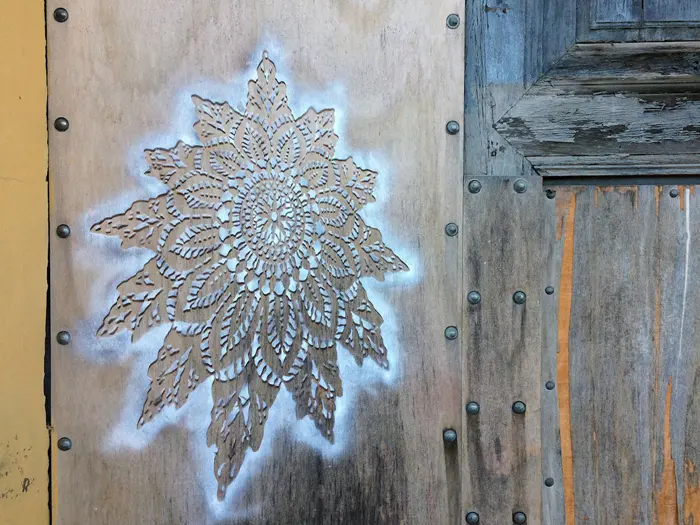
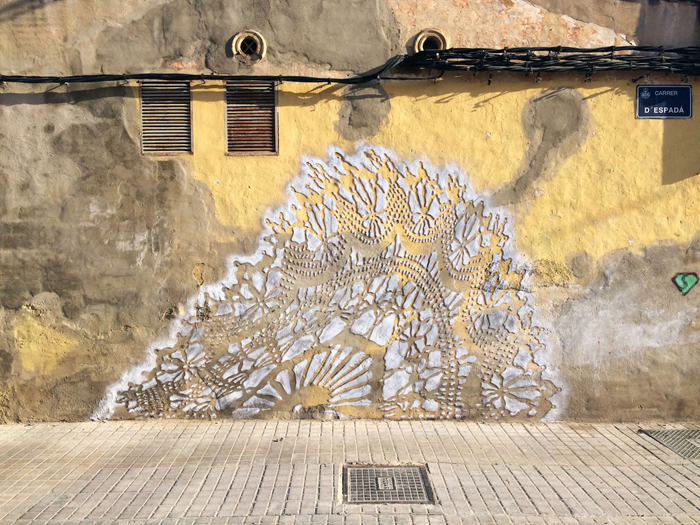
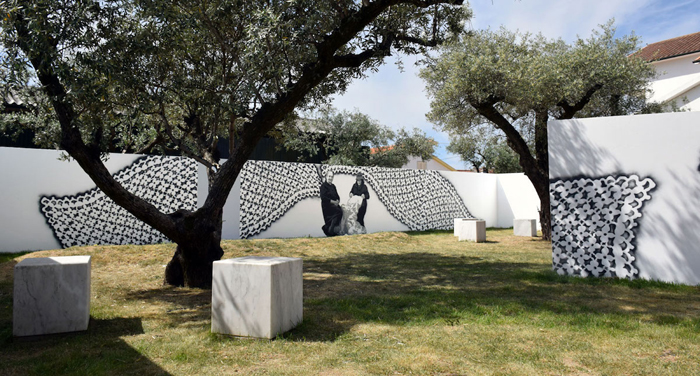
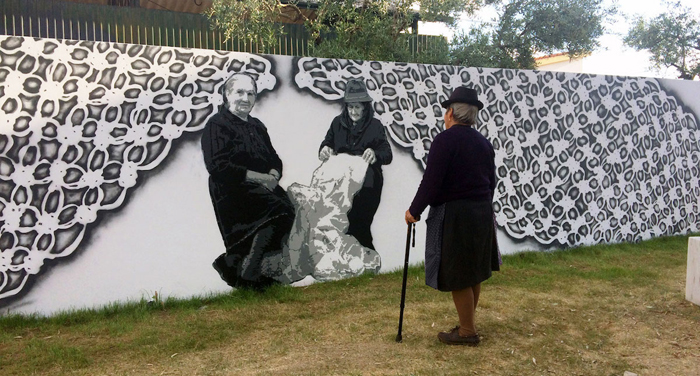
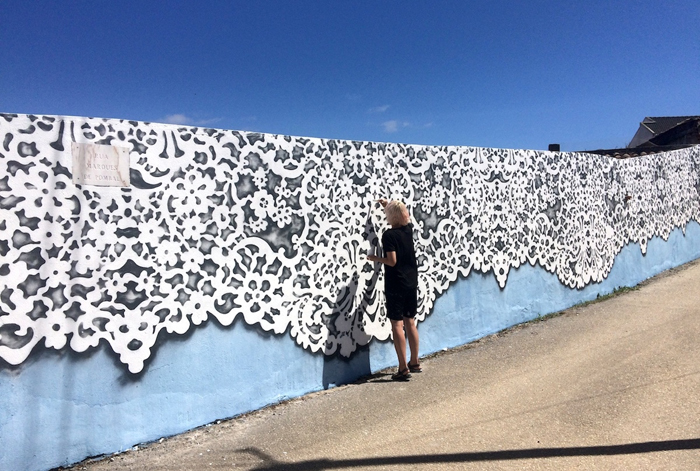
Polish street artist NeSpoon working on her lacework murals in Berlin, Germany
